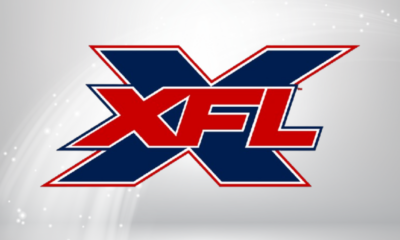
American professional football has long been dominated by the National Football League (NFL), a global juggernaut that represents the pinnacle of the sport. However, alternative leagues like the XFL have emerged as complementary platforms, offering opportunities for players, coaches, and fans to engage with the game in new ways. This article delves into the XFL’s resurgence, its place within the landscape of American pro football, and how it compares and contrasts with the NFL.
The History of the XFL: A League Reimagined
The XFL was originally launched in 2001 as a joint venture between Vince McMahon’s WWE (then WWF) and NBC. The league sought to combine football with entertainment, offering a grittier, faster-paced version of the sport. Despite an enthusiastic start, it folded after just one season due to declining viewership and financial losses.
In 2020, McMahon revived the XFL, rebranding it as a more serious and streamlined league focused on high-quality football rather than theatrics. However, the COVID-19 pandemic cut the season short, forcing the league into bankruptcy. Later that year, Dwayne “The Rock” Johnson and his partners purchased the XFL with the vision of turning it into a sustainable spring football league that could coexist alongside the NFL.
The Role of the XFL in American Football
The XFL positions itself as a complementary league to the NFL rather than a competitor. Its unique role includes serving as a developmental platform, experimenting with rule changes, and filling the football void during the NFL’s offseason.
Developmental Opportunities for Players
For many players, the XFL provides a second chance to showcase their skills. Athletes who go undrafted or are cut from NFL rosters can use the XFL to prove their abilities and earn another shot at the big league. Notable examples include players like P.J. Walker, who excelled in the XFL and later secured a spot on an NFL roster.
The league also benefits younger players who might need more experience before they’re ready for the NFL. Unlike college football, the XFL allows players to earn a salary while refining their skills in a professional environment. Similarly, just as players get a fresh start in the XFL, fans seeking exciting online gaming opportunities can explore casino platforms like Slotozen casino, where innovative games and bonuses provide a dynamic experience for players looking for something new.
Innovations in Rules and Gameplay
The XFL serves as a testing ground for innovative rule changes that could eventually influence the NFL. For example, the XFL introduced unique kickoffs designed to reduce injuries, a three-tiered extra-point system, and faster game clocks to keep games under three hours. These innovations make the game safer and more engaging for fans.
| Rule Innovation | XFL Version | NFL Version |
| Kickoff Rules | Players line up five yards apart to reduce high-speed collisions | Traditional kickoff rules |
| Extra Points | Options for 1, 2, or 3 points based on distance | Standard 1-point kick or 2-point conversion |
| Overtime | Alternating attempts from the 5-yard line (similar to a shootout) | Traditional sudden-death format |
NFL vs. XFL: Key Differences and Complementary Roles
While both leagues focus on professional football, the NFL and XFL have distinct identities. Understanding their differences highlights how the XFL can complement the NFL.
Structure and Scale
The NFL is a billion-dollar enterprise with 32 teams, extensive media deals, and a fan base that spans the globe. It represents the highest level of professional football, with top-tier athletes competing for Super Bowl glory. In contrast, the XFL operates on a much smaller scale, currently featuring eight teams. Its goals are more modest, focusing on providing opportunities and experimenting with new ideas.
Player Development and Exposure
While the NFL primarily features established stars, the XFL is a haven for overlooked talent. Players in the XFL are often hungry to prove themselves, creating a high-stakes atmosphere. For fans, this dynamic adds an emotional layer to the games, as they watch players fight for their dreams.
Examples of XFL Success Stories:
- Taylor Heinicke: Before his breakout performance in the NFL, Heinicke played in alternative leagues like the XFL to stay in the game and refine his skills.
- P.J. Walker: After dominating in the XFL, Walker transitioned to the NFL, showing the league’s value as a stepping stone.
Season Timing and Fan Engagement
One of the XFL’s greatest strengths is its timing. The league runs during the NFL offseason, giving football fans an alternative to traditional spring sports. This allows die-hard fans to continue enjoying live football and provides networks with additional programming.
Challenges Facing the XFL
Despite its promising potential and unique position in American football, the XFL faces several critical challenges that could affect its ability to establish itself as a sustainable and influential league. These challenges range from financial stability to competition with other leagues and the ongoing need to build a strong connection with its fan base. Much like a black jack sheet helps players navigate probabilities and make optimal decisions at the table, the XFL must rely on precise planning and strategic adjustments to overcome these hurdles. By analyzing data, anticipating challenges, and making calculated moves, the league can maximize its chances of success in a highly competitive sports market.
Financial Viability
One of the most significant hurdles for the XFL is proving it can generate consistent and sufficient revenue to operate long-term. Unlike the NFL, which benefits from decades of history, lucrative media deals, and a massive fan base, the XFL is a relatively young league with a limited track record. It does not yet have the extensive sponsorships or television contracts that drive the financial success of established leagues.
The involvement of high-profile figures such as Dwayne “The Rock” Johnson has brought considerable attention to the league, helping to attract investors and sponsors. However, the league still faces the challenge of ensuring that ticket sales, merchandise, and broadcast rights provide steady income. With smaller stadiums and limited audiences compared to the NFL, the XFL must rely on strategic partnerships, innovative marketing, and an appealing product on the field to secure its financial future.
Key Considerations for Financial Viability:
- Revenue Sources: Building diverse revenue streams, including pay-per-view options, streaming partnerships, and in-game advertisements.
- Cost Management: Balancing player salaries and operational costs while maintaining high-quality play and fan experiences.
- Long-Term Investments: Focusing on sustainable growth rather than quick financial returns.
Competition for Talent
The XFL operates as a developmental league but must still compete with other professional football organizations for talent. The NFL, Canadian Football League (CFL), and even spring leagues like the USFL attract players who may otherwise consider the XFL. While the league has positioned itself as a platform for overlooked or undrafted athletes, its ability to recruit and retain skilled players remains a key challenge.
One of the XFL’s main advantages is its role as a “second chance” league. Players who have been cut from NFL rosters or overlooked in the draft can use the XFL to prove their worth and potentially return to the NFL. However, attracting top-tier talent often requires offering competitive salaries, strong facilities, and a high level of competition—all of which require significant resources.
Challenges in Talent Acquisition:
- Player Compensation: The XFL’s salaries are modest compared to those in the NFL, which can deter top-tier players.
- Prestige Gap: For many athletes, the NFL remains the ultimate goal, making the XFL a stepping stone rather than a destination.
- Quality of Play: Ensuring that games are competitive and entertaining requires attracting and retaining a sufficient pool of skilled athletes.
Fan Engagement
Perhaps the most critical challenge for the XFL is building a loyal and engaged fan base. Unlike the NFL, which has a deep-rooted history and generations of fans, the XFL is still carving out its identity in a crowded sports entertainment landscape. Engaging fans requires more than just good football—it demands storytelling, innovative marketing, and fostering a sense of community around the league and its teams.
The XFL’s shorter history means it lacks the traditions, rivalries, and emotional connections that drive NFL fandom. To overcome this, the league must focus on creating exciting and fast-paced games, emphasizing player personalities, and involving fans in the development of the league. The timing of the XFL season, during the NFL offseason, provides an opportunity to capture the attention of football-starved audiences, but this alone is not enough to ensure long-term success.
Strategies for Building Fan Engagement:
- Storytelling: Highlighting players’ journeys, particularly those who use the XFL to revive their careers, can create compelling narratives for fans to follow.
- Interactive Experiences: Offering digital and in-person engagement opportunities, such as fan voting on certain game aspects or behind-the-scenes access, to create a sense of ownership among fans.
- Local Community Outreach: Engaging with the cities and regions where XFL teams are based to foster local pride and build a regional fan base.
The Future of the XFL and Its Relationship with the NFL
The XFL’s potential lies in its ability to carve out a unique niche within the football ecosystem. Its role as a developmental league, testing ground for innovations, and offseason entertainment source positions it as a valuable partner to the NFL.
Collaboration with the NFL
The XFL and NFL could benefit from closer collaboration. For example, the NFL could use the XFL as a testing ground for new rules or technologies, while the XFL could gain credibility through official partnerships. Additionally, sharing resources and talent pipelines would strengthen both leagues.
Expanding the League
For the XFL to thrive, expansion may be necessary. Adding more teams and cities could increase its reach and fan engagement. However, this must be done carefully to ensure financial sustainability.
Conclusion
The XFL represents an exciting opportunity to enrich American professional football. While it may never rival the NFL in scale or prestige, its role as a developmental league, innovation hub, and offseason alternative gives it a distinct and valuable place in the football ecosystem. With strong leadership, a focus on fan engagement, and potential collaboration with the NFL, the XFL has the potential to grow into a lasting and impactful part of the sport’s landscape. As fans, players, and stakeholders embrace this new era of football, the XFL stands poised to complement and enhance the American football experience.
Unleash the Action: Sign up for XFL Insider and Fuel Your Passion for Football!

USFL and XFL Merger: A Deep Dive into the Historic Collaboration
Latest Podcast
-


XFL Podcast
/ 1 year agoXFL-USFL Merger Insights: Houston’s Future, Draft News, Player Movement – Ep. 216
Welcome to Episode 216 of the “XFL Week In Review,” your premier destination for...
By Mark Perry







